Dear Tucker,
How can you possibly be turning five? For this birthday, I’ll be praying five special things for you.

Wish #1: I wish for you beautiful places that stir your heart—that field of grass you run through, those dunes of sand, that bumpy boat ride. And I believe one day, you’ll fall in love with the mountains again. (I promise you won’t get sick every time you go there!)
But, you don’t have to travel far. You can find remarkable places right where you are.
Remember the roly-poly you discovered under the stone? May you always s-l-o-w down to discover tiny things hidden underneath the vast beauty surrounding you. Seek them. They’re there.
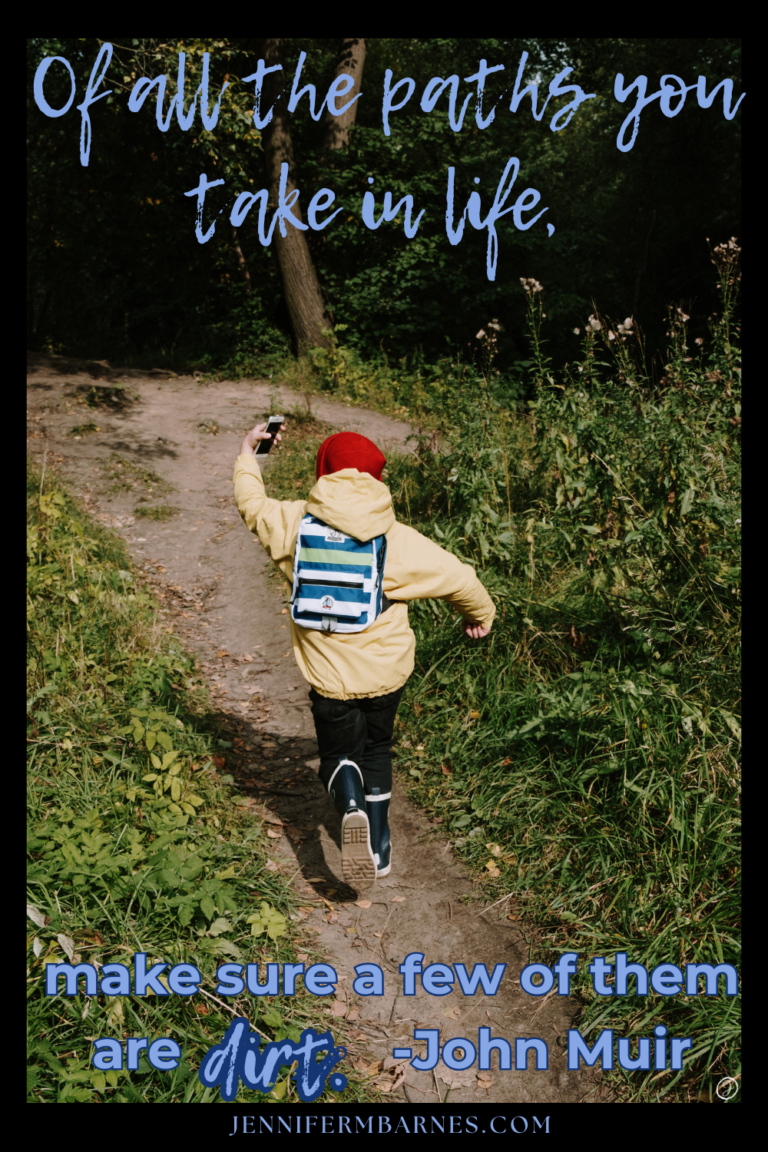
Wish #2: May you wonder as you wander and learn as you live.
I hope your thoughts turn into questions. May your curiosity lead you to talk with (and listen to) others, pore over great books, and embark into meaningful studies.
I hope you’ll be surrounded by books that move you—to fits of giggles, peaceful feelings, answers to some of those questions, and even inspire bigger ideas. Hunt for books that compel you to dream big, yet create in you ideas on beginning to change the world right now.
I know your gifts and talents will unfold as you embrace the things you love. I hope you’ll practice and develop them wisely. Listen to your parents, coaches, and teachers.
Wish #3: I hope you’ll make friends wherever you go.
I love how you greet people you pass on walking trails, calling out “Good morning! … Good morning!” (Even when it’s not morning!) Everyone seems surprised by your thoughtfulness. And when your cousin fell backwards, you were the one who cried. You are the most kind-hearted kid I know. Keep connecting with new people, too. You make a difference in other people’s lives—and they will make a difference in your life, too. Your bravery, confidence, and independence are growing you into an incredible little person. I believe that some of your friendships will last your whole lifetime. I pray technology isn’t something that ever keeps you from connecting with people in real ways.
Wish #4: I pray that Jesus becomes your Best Friend.
Even though you have lots of sweet friends, I hope Jesus will be your very best one! May you realize how much He loves you. Choose Him as your own and ask Him to lead you. He will. I hope you’ll always feel chosen and set on the amazing adventure He has for your life.
Wish #5: Never forget that you’ve got a team behind you, cheering you on.
We believe in you—and we want only the best for you as you overcome challenges and push through this world. Struggles will come, but facing them makes you even stronger. Lean on us and keep your dream forefront in your mind. We’ll celebrate all your successes, too, from excelling at the monkey bars to graduating from preschool.
You’ve only just begun!
Love you more,
Gigi
You may be wondering...
“Why am I reading this letter from a grandma to her grandson on his 5th birthday?”
One of my friends suggested I just drop my letter to Tucker in the blog. She says she just loves to eavesdrop into people’s lives.
Incidentally, I’ve written Tucker every year on his birthday (since the day of his birth)—and plan to continue this letter-writing tradition. When he graduates from college, I’ll give him a special album with all the handwritten letters.
Why would I take the time to write a slew of letters anyway? From my earliest days of teaching kindergartners, I’ve discovered so many reasons to read letters with littles and help them learn to compose their own. Here are just a few reasons for letter-writing activities…
To communicate clearly
- Letters build skills in organizing information and expanding vocabulary. They often accentuate politeness and gratitude, prioritizing positive interactions.
to promote literacy
- Who wouldn’t want to practice reading when you’ve received something personally created for you? Letters help children feel loved, valued, and more connected with others. Our natural response is to reply immediately. And what better way is there to build fine-motor skills and legibility?
to stimulate thinking
- Through writing and receiving letters, children learn to express their thoughts and emotions in meaningful ways. There are so many things to think about while letter-writing. Here’s just a few ways young learners progress as thinkers:
- Consider the content they wish to share
- Use their imaginations
- Decide which words they wish to write in which order
- Keep track of their desired content while making multiple decisions about letter choices, spacing, and punctuation
- Even the ability to figure out which way a lower-case d faces! That’s a lot of work for a little person!
to capture a shared moment in time
- As I sift through letters my mother saved (some more than 50 years old!), I’m drawn back to our lives, the periods of history we lived through, and the adventures we shared. Nostalgia beckons me. Mom’s gracious spirit radiates through her neat script. Through other significant letters—both personal and those in books, children learn much about significant historical moments and the people who lived through them.
to leave a legacy
- In the late 1990’s, Mother created the idea of gifting each grandchild a very special Bible verse. She prayed over these verses and worked with all twelve grandchildren to memorize them. At the bottom of every valentine and Easter card, Congratulations and Thanksgiving card, she handwrote each child’s personal verse. Now as I pull out those treasured keepsakes to show my grandchild, I see how Mother’s faith shines though, impacting generation upon generation. And Tucker feels a sense of closeness with her, too, even though he only knew her for 21 months. I wonder, “Could my letters be a way to share with my future generations the things I most care about?”

The Top 5 Letter-Writing Activities that Enhance Children’s Lives
1. Start each day with a morning letter.
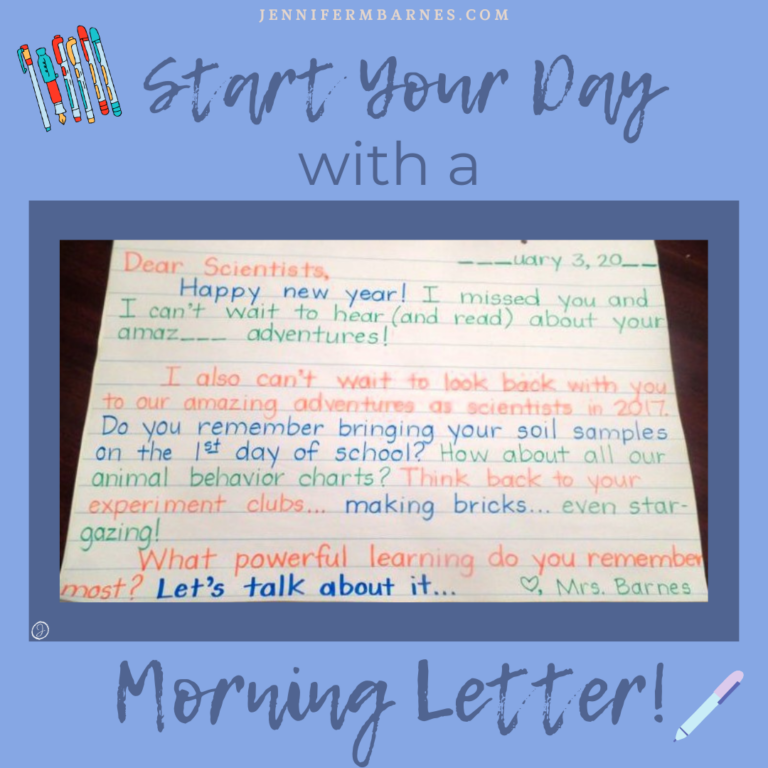
Besides setting the tone and schedule for the day, much academic content can be taught in these letter-writing activities. Young readers will:
- Recognize repeated patterns in the structure of a friendly letter day after day
- Figure out new terms through varied salutations (Dear Friends, Dear Scientists, Dear Writers…)
- Discover spelling and grammar rules in context
- Develop strategies for figuring out unknown words
- Use other strategies for figuring out missing letters in words to practice phonics skills, and more—
All while enjoying the fun of deciphering something interesting and relevant to their lives!
Just note: The letters for kindergarten are much easier, more vocabulary-controlled, and picture rebus cues. These first grade letters used more challenging vocabulary and “lost” spelling patterns and words for children to practice their phonics skills.
2. Create a card-making and letter-writing station.
This center might just become one of your most popular stations. Provide a variety of interesting materials for children to create their own stationery, like:
- Colorful cardstock
- Themed or seasonal papers
- Blank greeting cards
- Self-sticking envelopes
- Markers, colored pencils, crayons, and gel pens
- Stickers and stamps to decorate
- Washi tapes
- Colorful copies of your class stationery
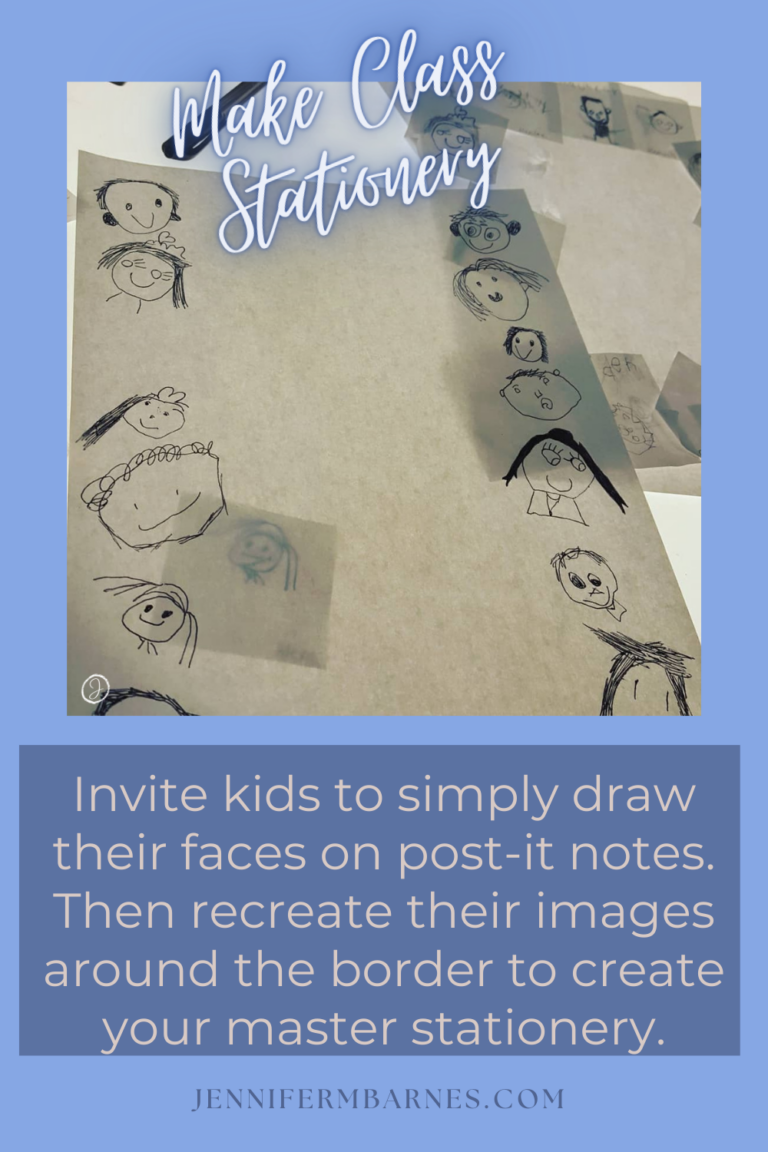
Designing our original class stationery
One of our first class projects each year was designing our own class stationery. I cherished the idea of communicating with other classes, local businesses (as thank you letters after special events), guest speakers, families, and more. My students became fans of letter-writing as well.
To create the stationery: I invited each child to draw a head shot of themselves in detail on 2”-squared papers. I then used a light table to transfer all their faces as the border of our class stationery and jotted each child’s name alongside their charming faces. After adding our return address, I printed multiple copies on bright shades of paper. We loved using the stationery for special events. Over the years, my students used stationery to write companies, zoos, elected representatives, soldiers, restaurants, and their favorite authors.
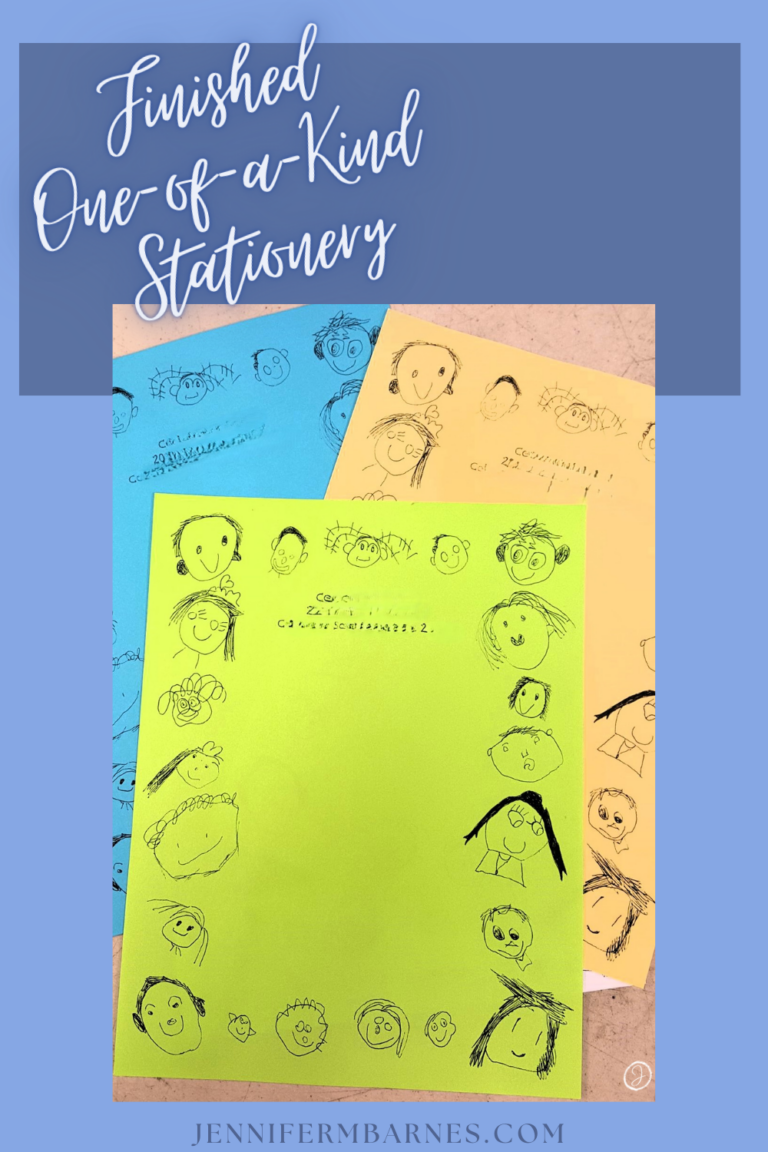
creating elaborate eagle card sets as gifts
Another fond memory related to stationery revolved around our bird sketches. We wanted to honor our families and friends who participated in a special birding event. So, our young artists designed elaborate cards as “thank-you gifts.” We couldn’t have offered a more beautiful culmination to our bird inquiry.
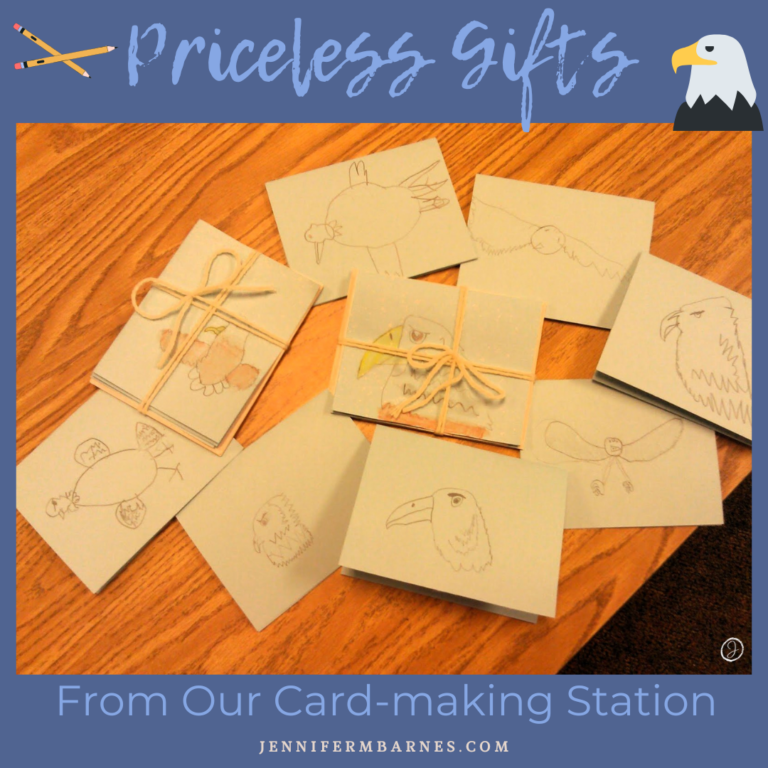
3. Teach children how to have written conversations with their families and each other—even when they don’t believe they can write.
(In older days, we equated these “written conversations” to writing notes on a church bulletin back and forth—or anywhere you couldn’t talk! More recently, children have equated them to texting friends or family members.)
To introduce these written conversations to children, we practiced “sharing the pen” in a whole-group setting so they could see the way a child and I wrote back and forth on a chart. Emphasize the importance of open-ended questions. “Yes/no” responses might leave you hanging.
On other days, I’d invite children to partner with classmates to create child-written written conversations. It was from these scripts we shared with families how to have written conversations of their own. What a neat snapshot into families’ lives as they interacted with the things we were learning at school!
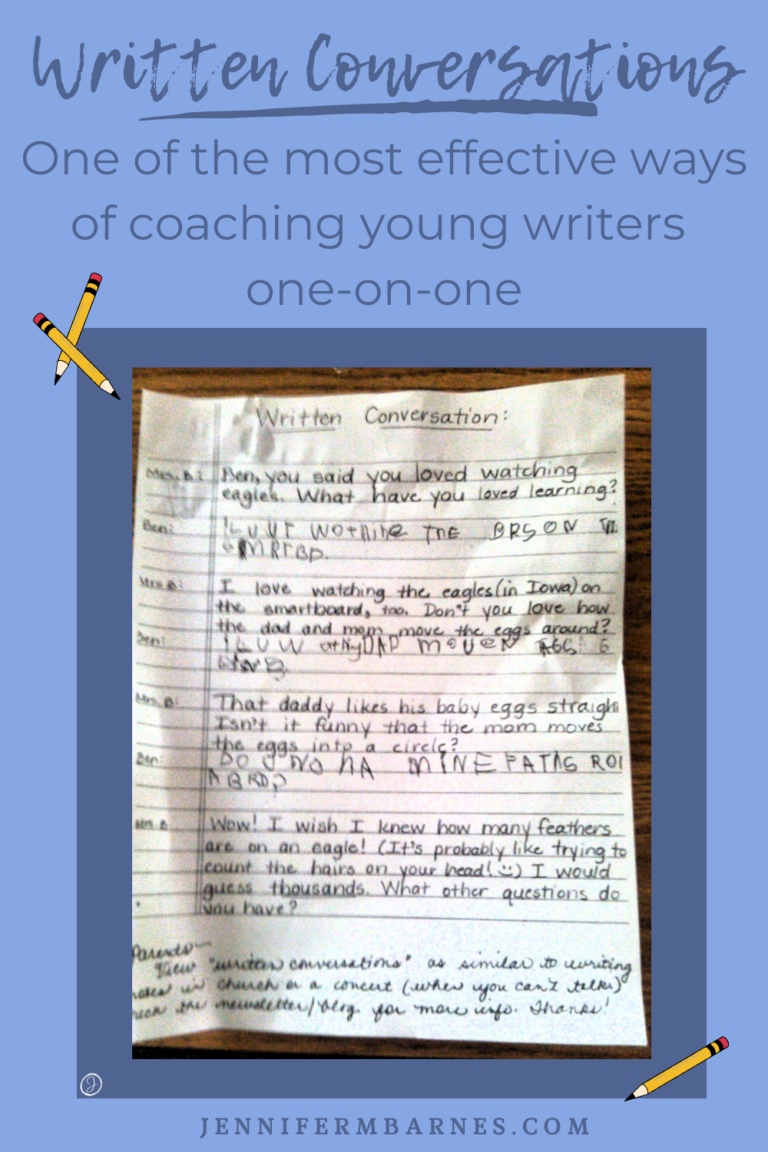
4. Find a pen pal.
Whether placement through a charity organization on the other side of the world or a cousin in another state, letter-writing is a tremendous way to practice important skills. Even more phenomenal is the joy that comes from checking the mailbox, the empathy gained from understanding someone else’s life a bit better, and the satisfaction of keeping a unique relationship going.
One of my colleagues established pen pal relationships for years. The whole school knew whenever another packet of letters arrived for his young writers. They’d spend time in the afternoons savoring their buddies’ words and composing their responses. Clearly, he worked hard to maintain such positive interactions with others through their letter-writing. And his students talked about it for years!
5. Highlight books that are anchored by letters.
Some of my favorites on letter-writing are:
Click, Clack, Moo Cows That Type – Doreen Cronin’s classic shows how cows set the farm on a grand adventure. All my students adored this one!
Diary of a Worm – Another favorite of Doreen Cronin’s classics share the delightful daily life of a worm through his journal entries.
Dear Baby, Letters From Your Big Brother – Sarah Sullivan chronicled the life of a new baby through the eyes and letters of her brother.
Can I Be Your Dog? – Troy Cummings uses the power of letter-writing to help Arfy find a home. Your kids will love seeing the variety of writing materials the young pup uses.
Boxes for Katje – Candace Fleming crafts an inspiring true story about children who changed each other’s worlds across the sea—all through kind letters.
Letter-writing is powerful.
Your memories and dreams, your hopes and ideas? They have the power to change the world of people in your life. How will you embrace letter-writing this week? Rereading some old favorites? Eavesdropping into people’s lives through reading books of letters? Or maybe even writing some of your own to those you love? We’d love for you to share your thoughts about the importance of letters over your life.
If you’d like to read more about how I introduced Writing Workshop to my class of five-year-olds on their first day of kindergarten, check out this post.

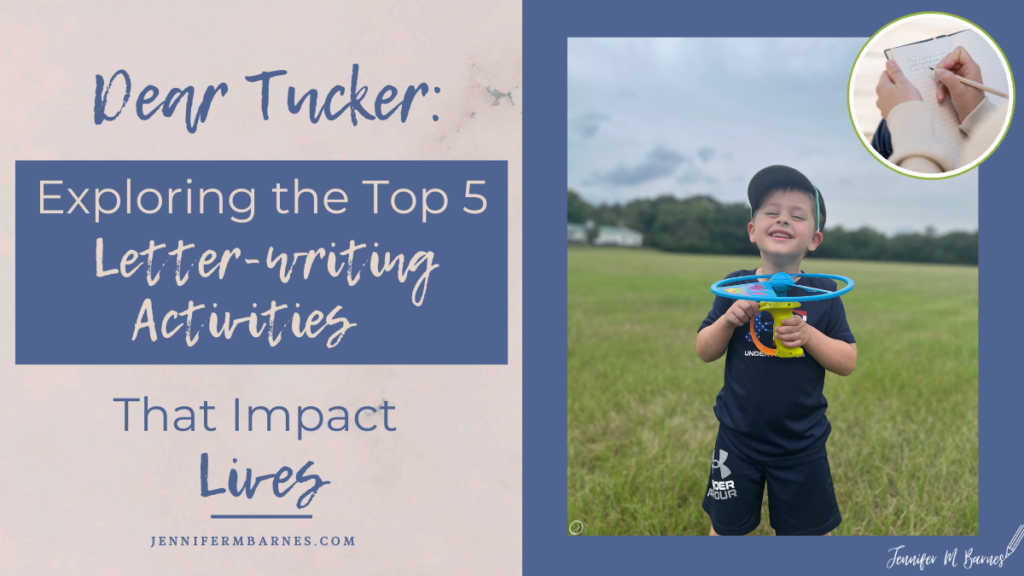
Love this so much!! I want to have my students write a letter tomorrow!
Ah, Liz! That is so sweet! I can’t wait to hear all about your experiences. Please feel free to show them any part of this blog, too, as inspiration. Thanks so much for reading – and commenting! 🩷
I love these ideas! And those letters from your Momma are treasures for sure.
I love the penpal idea! I used to have my ESL students write appreciation letters to all of the staff in the building, including the secretaries, janitors and maintenance workers. They learned a lot about greetings, encouraging words, and the format for letter writing. We had several staff stop by our room and say that the letters brought them to tears. What a great way to teach writing and use it to encourage others!
Wow, Christy. What an impactful way for you to show your students the power of writing letters, too. What a great idea! It really touches us all, doesn’t it? Thank you so much for reading – and commenting. 🩷
Thank you for inviting us to soak in such wonderful inspiration for this blog post! I’m going through boxes of old photos now , sprinkled with letters from family and significant others over the years. Those written to and from children are most special. It’s a record of how they have been prayed for and encouraged since they were young. Somehow these letters paint a picture that the camera couldn’t capture. What treasures!